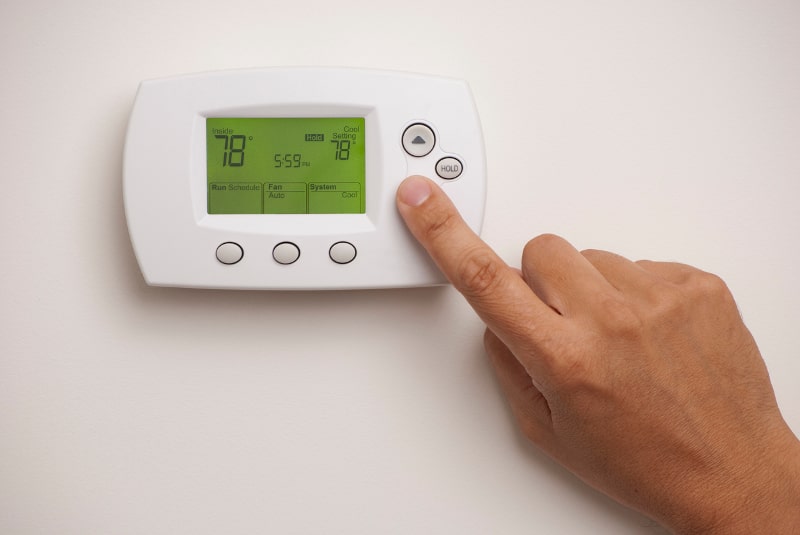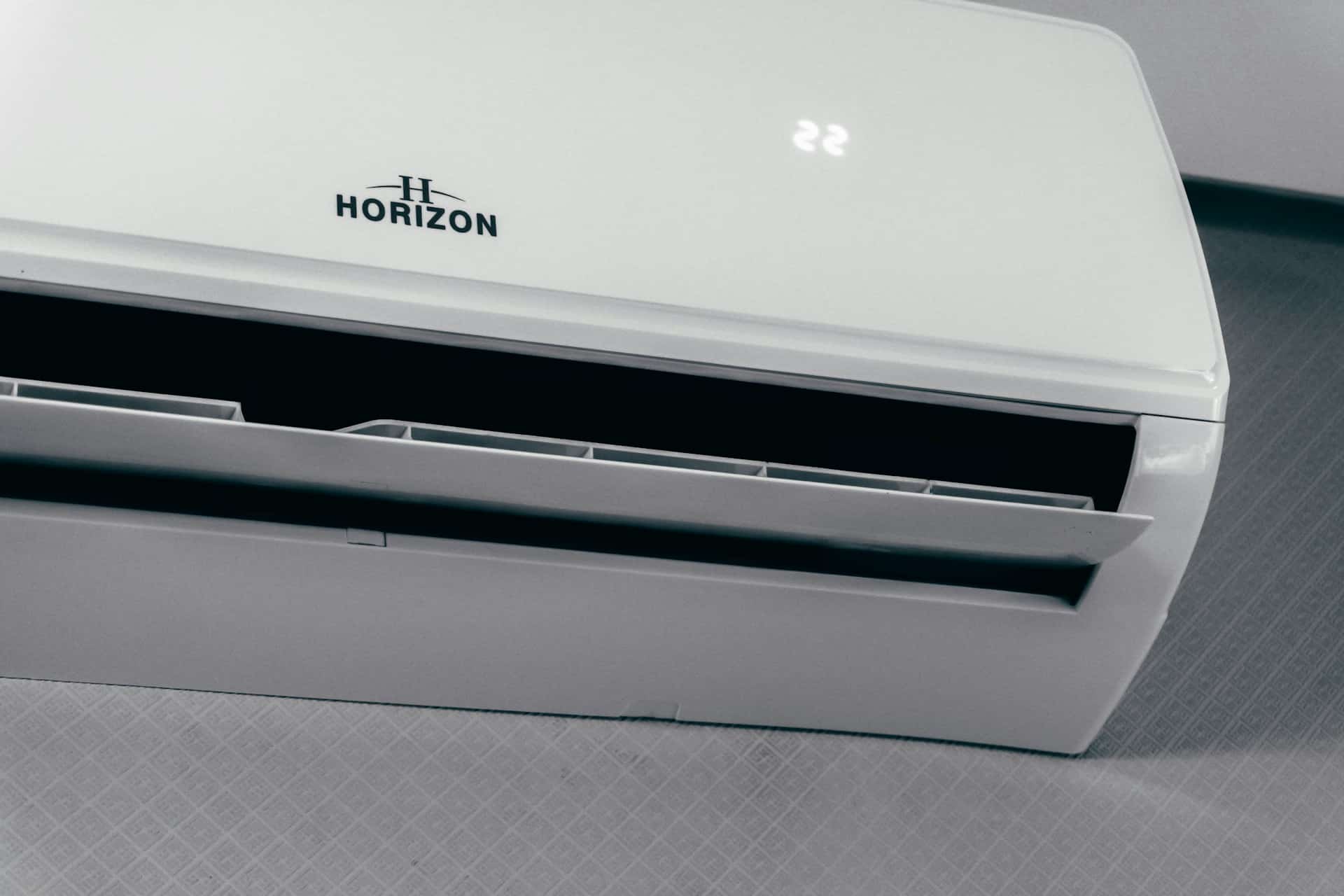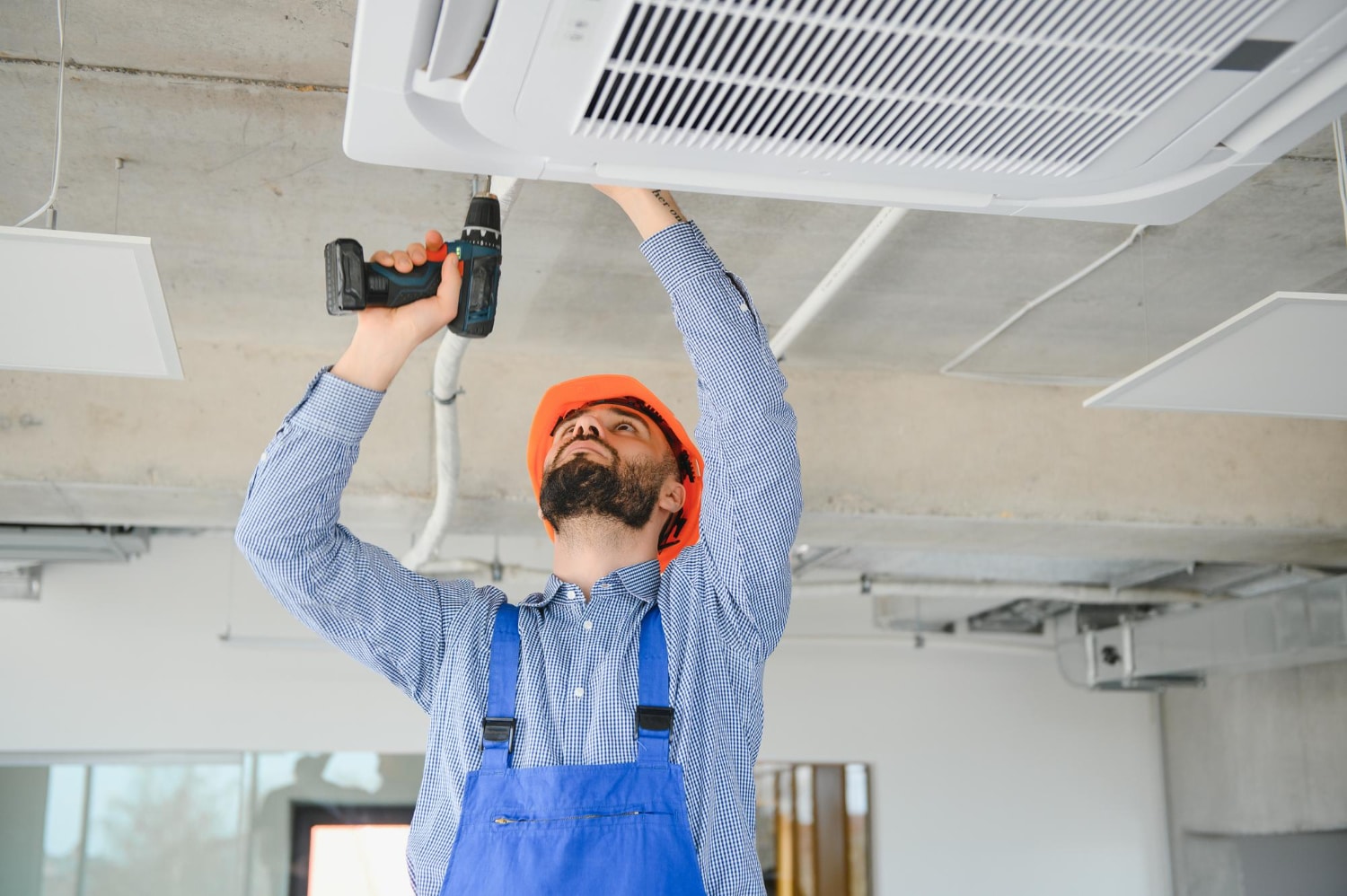So, ever feel like your thermostat has been around longer than your favorite coffee mug? You’re not alone! Most people don’t think about replacing their thermostat until their home suddenly feels like the Arctic—or worse, a sauna. Haha! But just how long do thermostats last before they start acting up? Whether you’ve got an old-school dial or a fancy smart model, knowing when to upgrade can save you from surprise energy bills and temperature tantrums. But most importantly, we need to have an idea of the exact life of thermostats. So, if we make a rough estimate, though wear and tear can limit thermostat lifespans, most survive 10–15 years. A faulty thermostat can cause short cycling, inaccurate temperature readings, and HVAC system issues. Time to replace your thermostat if you have increased energy bills, fluctuating temperature in your home, or air conditioner troubles. A malfunctioning thermostat can also lower energy efficiency. Upgrade to a programmable thermostat or smart thermostats to optimize heating and cooling system. Maintenance and checkups keep your thermostat set running smoothly and delay thermostat replacement.
Signs It’s Time for a Thermostat Replacement

A properly functioning thermostat is essential for maintaining a comfortable home and managing energy bills. Over time, wear and tear can cause issues that affect temperature settings, energy efficiency, and overall HVAC system performance. Here are key signs that indicate it’s time to replace your thermostat;
1. Inaccurate Temperature Readings
If the temperature readings on your thermostat do not match the actual temperature in your home, it may be a faulty thermostat. Here’s a look at its possible causes;
- A malfunctioning thermostat sensor that no longer detects temperatures correctly.
- Dirt or dust buildup affecting internal components.
- Poor placement near direct sunlight, vents, or appliances emitting heat.
An inaccurate thermostat can make your heating and cooling system overwork or underperform, leading to inefficiency and discomfort.
2. Short Cycling (Frequent On and Off Cycles)
A malfunctioning thermostat can cause short cycling, where the HVAC system turns on and off too frequently. This happens due to:
- Faulty wiring disrupting communication between the thermostat and HVAC system.
- Incorrect temperature settings, causing premature shutdowns.
- Aging components that fail to regulate cycles effectively.
Short cycling increases higher energy consumption, reduces efficiency, and shortens the lifespan of your air conditioner and furnace.
3. Sudden Spikes in Energy Bills
Unexplained increases in energy bills could signal a faulty thermostat. If the thermostat isn’t properly controlling the heating and cooling system, it can lead to:
- Overheating or overcooling, forcing the system to use higher energy.
- Inefficient temperature settings, causing prolonged system operation.
- Failure to activate energy-saving modes, especially in smart thermostats or programmable thermostats.
If your energy bills are rising without a significant change in usage, consider a thermostat replacement.
4. Delayed or No Response from the HVAC System
A well-functioning thermostat should adjust the temperature settings immediately after changes. If you experience a delay or no response, possible reasons include;
- Wiring issues preventing proper thermostat-HVAC system communication.
- A dying battery in battery-powered models.
- Outdated software or hardware in smart thermostats needing an update or thermostat replacement.
If your air conditioner or heater doesn’t respond promptly, it may be time to replace your thermostat.
5. Your Thermostat Is More Than 10 Years Old
Older thermostats lose efficiency due to wear and tear. If yours is over 10 years old, consider upgrading to a;
- Programmable thermostat for scheduled heating and cooling.
- Smart thermostat with remote control, learning features, and optimized energy efficiency.
A new thermostat enhances energy efficiency, reduces higher energy costs, and improves overall comfort in your home.
Impact on Energy Efficiency

Credit: thehoodmagazine.com
Do you know there is a huge impact on energy efficiency when it comes to the thermostat? A malfunctioning thermostat can significantly reduce energy efficiency by causing your HVAC system to operate inefficiently. When your thermostat fails to regulate temperature settings correctly, your heating and cooling system may work harder than necessary, leading to increased wear and tear, higher operating costs, and an uncomfortable temperature in your home. Below are the key ways a faulty thermostat can impact your home’s efficiency and why it may be time to replace your thermostat.
Higher Energy Consumption
A malfunctioning thermostat can cause your HVAC system to run longer than required, leading to higher energy consumption. This happens due to;
- Incorrect temperature readings, making the system believe the house is too warm or cold.
- Failure to shut off at the right time, keeping the air conditioner or heater running unnecessarily.
- Inability to regulate the thermostat set properly, leading to overcompensation in heating or cooling.
The longer your HVAC system operates inefficiently, the more energy bills will increase, costing you money while reducing overall energy efficiency.
Uneven Heating or Cooling
A faulty thermostat can cause inconsistent temperature settings, leading to discomfort and inefficiency. You may notice;
- Some rooms feeling too hot while others remain too cold.
- Difficulty maintaining a stable temperature in your home, requiring constant manual adjustments.
- Poor air distribution due to the heating and cooling system running incorrectly.
Upgrading to a programmable thermostat or smart thermostat can help ensure balanced heating and cooling throughout your home, improving energy efficiency and reducing reliance on manual adjustments.
Increased Strain on HVAC Components
When your HVAC system runs longer than necessary, key components such as the air conditioner, furnace, and blower motor experience excessive wear and tear. A faulty thermostat can cause;
Overheating of critical system parts, leading to premature breakdowns.
- More frequent maintenance needs due to strain on the heating and cooling system.
- Higher repair costs and a shorter overall lifespan of your HVAC system.
Timely thermostat replacement can prevent costly repairs and extend the life of your heating and cooling system.
Short Cycling and Its Effects
Short cycling occurs when your HVAC system turns on and off frequently, putting excessive strain on system components. So, a malfunctioning thermostat can cause;
- Rapid cycling of the air conditioner, preventing it from running long enough to dehumidify properly.
- Increased energy use, as frequent restarts consume more power than continuous operation.
- Accelerated wear and tear, reducing the efficiency and lifespan of the system.
Replacing a faulty thermostat with a programmable thermostat or smart thermostat can help regulate cycles properly, improving energy efficiency and system longevity.
Choosing a Replacement Thermostat

Credit: billyaircon.com
Now, let’s talk a bit about the thermostat replacement. So, if you suspect you have a faulty thermostat, investing in a thermostat replacement can improve energy efficiency and overall comfort. An outdated or malfunctioning thermostat can lead to higher energy costs, short cycling, and increased wear and tear on your HVAC system. Choosing the right thermostat ensures better control over the temperature in your home and helps regulate your heating and cooling system more efficiently.
i. Programmable Thermostats
A programmable thermostat allows you to customize temperature settings based on your daily routine. This type of thermostat can help;
- Lower energy bills by optimizing heating and cooling system cycles.
- Improve comfort by automatically adjusting the temperature in your home.
- Reduce wear and tear on your HVAC system by preventing unnecessary operation.
- Minimize short cycling, ensuring efficient system performance.
With a programmable thermostat, you can set different temperature settings for various times of the day, reducing the workload on your air conditioner and heater. And for some hands-down good services you have your very own JLM thermostats installation services! Contact us and get a quote, right now!
ii. Smart Thermostats
Upgrading to smart thermostats offers advanced technology and convenience. These devices provide:
- Remote access via smartphone apps, allowing you to adjust your thermostat set from anywhere.
- Learning capabilities that adapt temperature settings based on usage patterns, improving energy efficiency.
- Integration with smart home systems, including voice assistants, for seamless control.
- Data-driven optimizations, ensuring your HVAC system operates at peak efficiency.
Maintaining Your Thermostat for Longevity

Credit: bobsrepair.com
Proper maintenance of your thermostat ensures that your heating and cooling system operates efficiently and prevents unnecessary wear and tear. A well-maintained thermostat provides accurate temperature readings, reduces higher energy costs, and prevents issues like short cycling or a malfunctioning thermostat. Follow these maintenance tips to maximize its lifespan and improve energy efficiency.
Keep It Clean
Dirt and dust buildup can interfere with your thermostat’s sensors, leading to incorrect temperature settings and causing your HVAC system to overwork. To maintain accuracy:
- Gently clean the thermostat with a soft cloth or compressed air.
- Avoid placing the thermostat near vents, windows, or appliances that may distort temperature readings.
- If you notice fluctuating temperature settings, cleaning may help restore proper function.
Check Wiring Connections
Loose or frayed wiring can lead to a faulty thermostat, disrupting communication with your heating and cooling system. To prevent issues;
- Turn off power before inspecting wires to avoid electrical hazards.
- Ensure all connections are secure and free from corrosion.
- If your thermostat set does not respond properly, wiring issues may be to blame, signaling it’s time to replace your thermostat.
Calibrate Temperature Settings
Inaccurate temperature readings can cause inefficient energy bills and discomfort in your home. To maintain accuracy;
- Use a separate thermometer to compare readings with your thermostat.
- If discrepancies exist, recalibrate your thermostat according to the manufacturer’s instructions.
- If calibration does not resolve the issue, consider a thermostat replacement to maintain better energy efficiency.
Replace Batteries Regularly
If your thermostat runs on batteries, failing to replace them can lead to a malfunctioning thermostat or system failures. So, to avoid issues;
- Replace batteries at least once a year or when the low-battery warning appears.
- A weak battery can cause short cycling, making your air conditioner or heater turn on and off frequently.
- If battery replacements don’t resolve functionality problems, it may be time to replace your thermostat.
Update Software (If Applicable)
For smart thermostats, regular software updates improve functionality, ensuring smooth operation of your HVAC system. Benefits include:
- Fixing bugs that may cause incorrect temperature settings.
- Enhancing remote access and scheduling features.
- Improving energy efficiency by optimizing heating and cooling patterns.
By keeping up with these maintenance tasks, you can extend the life of your thermostat, prevent higher energy costs, and avoid costly thermostat replacement. If persistent issues arise, such as inconsistent temperature in your home or frequent short cycling, it may be time to replace your thermostat with a programmable thermostat or smart thermostat for better performance.
The Final Verdict

Credit: cornelsplumbing.com
As we come towards the end, we’d say a faulty thermostat can disrupt your heating and cooling system, causing short cycling, inaccurate temperature readings, and higher energy costs. If you notice wear and tear or rising energy bills, it may be time to replace your thermostat. Upgrading to a smart thermostat or programmable thermostat improves energy efficiency, optimizes your thermostat set, and keeps the temperature in your home consistent. A timely thermostat replacement ensures your HVAC system runs smoothly, saving you money and hassle.
KNOW YOUR THERMOSTAT LIFESPAN! 🌀



